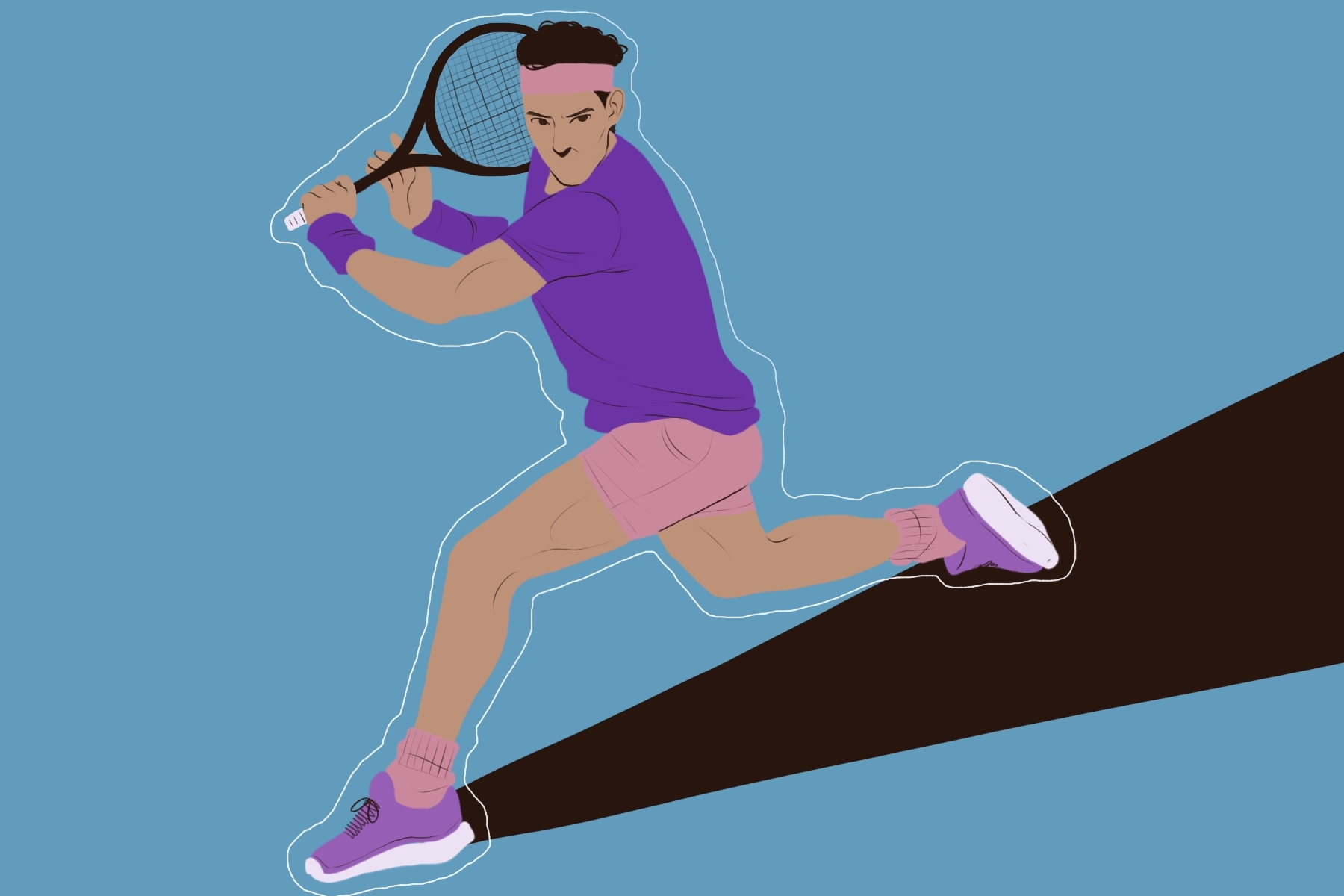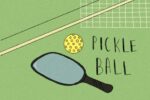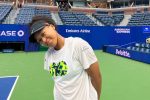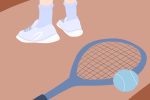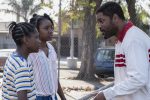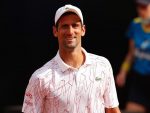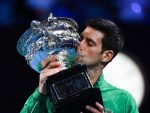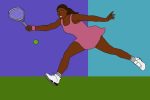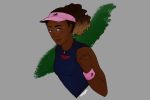Every year, the top tennis players in the world compete for championships at four major tennis tournaments: the Australian Open (held in Melbourne), Roland Garros (more familiarly known as the French Open), Wimbledon (held in London) and the U.S. Open (held in New York). This year at Roland Garros, former global champion Rafael Nadal from Spain entered the tournament as the 5th seed and clinched the title, simultaneously securing his 22nd Grand Slam. He also broke the record for the most Grand Slam titles held by any male tennis player, ever. It took the Spaniard just two hours and 18 minutes to achieve this feat, beating the 8th seeded player, Casper Ruud from Norway, in three straight sets. With two of the four major tournaments under his belt, tennis fans everywhere are wondering if Nadal will play at the upcoming Wimbledon tournament despite a painful foot injury that has plagued him throughout his career.
Over 32,000 people descended onto the French Open’s Paris grounds on the first day to watch the start of a promising tournament. Two years on from the beginning of the COVID-19 pandemic, attendance restrictions were lifted and the massive crowds returned in force. Coming off his Australian Open victory from earlier in the year, Rafael Nadal was the fan favorite to win. He already had 13 French Open titles under his belt and a win-loss record of 105-3. After three easy wins over early-round opponents, he ran into 9th seed Felix Auger-Aliassime. Nadal lost two sets to the Canadian player in a best-of-three match before emerging victorious and moving on to the quarterfinals.
After the match, Auger-Aliassime — who hired Nadal’s uncle and former coach Toni Nadal back in 2021 to help his game — said he “[wished] Rafa the very best,” but that it “[would] be a monumental effort for him…to win.” Auger-Aliassime also joined the short list of players (the only others being Novak Djokovic and John Isner) to push Nadal to a fifth set at Roland Garros, solidifying his own place in the Paris records. Nadal remarked during the on-court interview following the match that though he was already looking ahead to the next challenge, Auger-Aliassime was one of the best players in the world.
In order to win his 14th French Open, Nadal had to face off with Novak Djokovic, the Serbian ranked No. 1 in the world at the start of the tournament. Out of their previous 58 encounters, Djokovic had won 30 versus Nadal’s 28 victories. Crowds quickly grew excited for what was gearing up to be the blockbuster match of the tournament. With a lefty forehand topspin that placed the ball out of Djokovic’s reach time after time, Nadal took an early lead winning the first set. Djokovic managed to wrest the second set from him and drew the fourth set out to a tiebreaker, but eventually the “King of Clay” prevailed, sending the Serbian home after a four-set quarterfinal. The next obstacle in Nadal’s path to the championship was Alexander Zverev, ranked No. 3, who he would meet a few days later in the semifinal.
When the match started, both Zverev and Nadal were itching to seize the advantage: The opponents sent each other running back and forth across the baseline, sprinting up to the net and retrieving impossible shots. The first set went to a tiebreaker, with Nadal eking out a 10-8 win to take the set. But Zverev had several wins and a consistency that promised to make the victory a grueling one no matter who won. Each player used drop shots whenever a winning opportunity presented itself, only to have the ball returned after an eye-widening effort by the other. As the second set neared Zverev’s advantage, Nadal came back to tie it at six games. Then, only a split second after hitting the ball that gave Nadal the victory, the game took a shocking and gruesome turn: Zverev’s ankle completely gave out underneath him and he hit the ground. A few days after forfeiting, Zverev updated his fans through his Instagram, revealing he underwent surgery after tearing all three of the lateral ligaments in his right ankle. His withdrawal from the tournament cleared Nadal’s way to the final, though the Spaniard said of the injury, “If you are human, you should feel very sorry for a colleague,” and that even though it was a dream to be in the final it was “not the way that we [wanted] it to be.”
Casper Ruud, a 23-year-old Norwegian player, came into the Roland Garros final with eight ATP Tour singles titles, seven of which he won on clay. Unfortunately, his experience was no match for Nadal. After brutally long exchanges from the baseline and some untouchable inside-out forehands, Nadal took the first set 6-3. During the second set, Ruud capitalized on several opportunities but it wasn’t enough to win him the set, with the second one also going in Nadal’s favor 6-3. The third set started right before the two-hour mark and ended in just 14 minutes with a backhand from Ruud that didn’t make it over the net, giving Nadal the fourth game to Ruud’s zero. Ten minutes later, on Ruud’s serve, an eight-hit exchange ended with a down-the-line backhand, winning Nadal the French Open. As the emotion of the moment overtook him, Nadal covered his face with his hands while the crowd roared their approval.
In the awards ceremony interview just after the match, Ruud paid tribute to the champion while thanking his team, saying, “Today I got to feel how it is to play against you in a final, and it’s not easy.” He also referenced Nadal’s past achievements, saying that he was “not the first victim,” and acknowledged that “there have been many before” to fall to the King of Clay.
After a gracious speech of his own, Nadal was ushered into a press conference where he caused controversy by admitting he received injections in his left foot for chronic pain. A sufferer of Mueller-Weiss syndrome (a congenital bone deterioration problem that causes deformity and weight-bearing issues in the foot), Nadal brought his doctor with him to Paris for the tournament to manage the pain and monitor his health. After his 2005 diagnosis, many speculated that he would be forced to retire from the sport. But to the joy of everyone who has watched his career unfold, he remained a pro tennis player. Unfortunately, such an extreme level of athleticism comes at a bodily cost, as Nadal revealed that “his foot was virtually asleep during the final,” and that he “played with no feeling in the foot, with an [pain-killing] injection on the nerve.” Though such injections are considered legal in most sports, including tennis, several top cyclists were quick to take umbrage with his choosing performance at the expense of his body. French cyclist Guillaume Martin was quoted saying, “What Nadal did would have been impossible in cycling.” Martin then cited how ill or injured cyclists do not compete, bringing up the cultural background and clichés about doping that plague even a squeaky-clean winner of a cycling competition.
Though Nadal has not responded to the cyclists’ condemnations, he did confess that he likely would not have played any other Grand Slam with his injury. Understanding the risks of such injections, he said, “[He did] not want to put [himself] in that position again,” and that, “it can happen once but it’s not the philosophy of life I want to follow.” A few days later, following a procedure on his foot, he was seen returning home to Mallorca, Spain, on crutches.
Unless it’s the glory of the calendar Grand Slam (winning all four major titles in one year) or breaking another record — which he has clearly stated is not his main goal — winning Wimbledon might not be worth it for the Spaniard. Nadal’s shot at this year’s Wimbledon depends on a lot more than just his desire to win, considering that the tournament would require him to do more irreparable damage to his foot. Even so, he hasn’t completely written off the London-based tournament, saying that “Wimbledon is a priority, always has been a priority,” but that he would only compete if he was able to play with anti-inflammatories, as opposed to the anesthetic injections he received for Roland Garros. Despite everything, he is still looking for a way back on the court. His tenacity gives tennis fans the hope that they will see him at a future major tournament, continuing to prove his mettle as a champion.


